Is data visualization important? Yes, visual is easier to comprehend than verbal, and graphical data presentation helps us grasp the necessary information easier and dive deeper to make the right decision.
Data modeling is the process of configuring data flows on a diagram during database development. That diagram defines the data structure, formats, and database functions to support the outlined business requirements. Finally, it becomes the foundation of the database and, in a broader context, of the entire software.

Contents
- The evolution of data modeling
- Conceptual data model
- Logical data model
- Physical data model
- Database diagrams in dbForge Studio
- Conclusion
The evolution of data modeling
The concept behind data modeling is as old as computer programming, or even older. When you get a task to design a new structure of any kind, the best way is to draw its model first. Even a simple scheme illustrates the concept better than a long text. Further, it helps you add details and work the idea through, so a more or less precise draft becomes a solid foundation for the real-life incarnation of your idea.
Data modeling became a separate discipline when database management systems conquered the market. Different data types required attention, and more databases grew larger and much more complicated.
The database structure is of exceptional value for correct and effective database performance. Data modeling ensured that databases got appropriate structures.
Nowadays, database specialists deal with data from plenty of new sources and loads of unstructured data. Databases can be of enormous sizes. Requirements grow more sophisticated with every day. Still, visual data models remain as necessary and efficient as always.
Even with all the innovative techniques and database structures, the development process marches from abstract to concrete and from general to detailed, through the conceptual, logical, and physical data models.
In the ANSI standards, these three data modeling types match their purpose:
- Conceptual – overviews the general structure and content without details
- Logical – provides a more detailed structure, but without any particular database specifications
- Physical – presents a comprehensive structure that can be turned into an actual database
Let’s review these types of data models in detail.
Conceptual data model
The conceptual data model is a model fit for the early development stages. It describes which data the business processes require and how they will operate that data in general without going into detail.
The diagram used to present the conceptual data model is of the DSD type – data structure diagram, the simplest format that covers only the fundamental entities (data elements or groups of data elements) and the most important relationships between these entities.
As a rule, the conceptual data model does not implement technical names. It uses business terms rather than technical ones so that managers and users can understand the concept. There are no specific definitions of entities or precise numbers because the conceptual data model is subject to change.
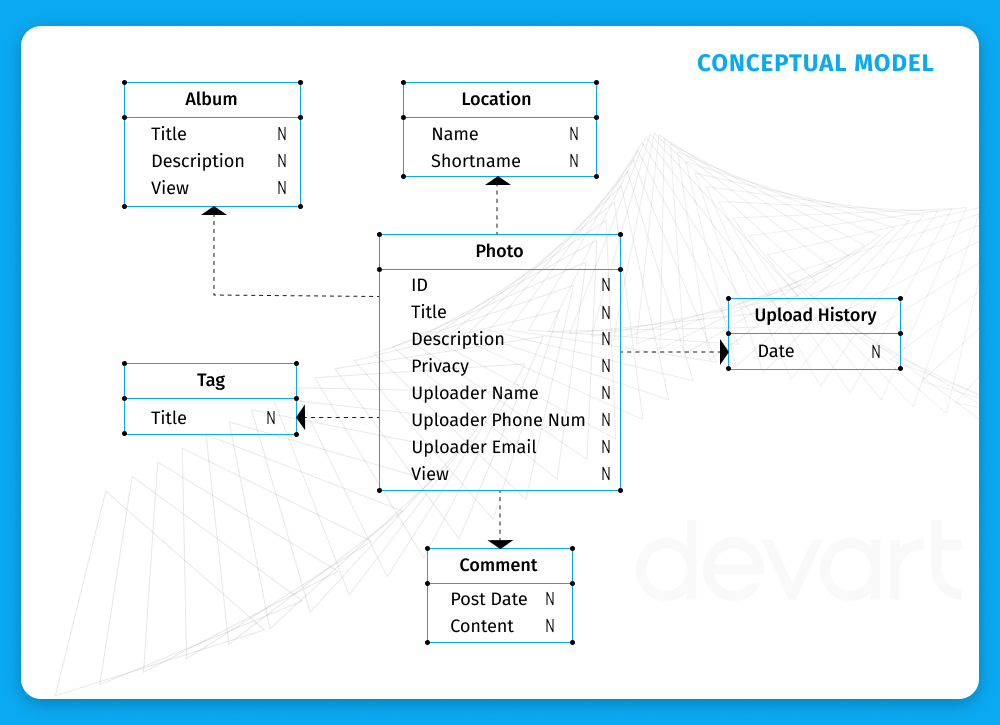
This general representation of the future database is a starting point of the development process. It gets improved and refined so that we can proceed to the next stage – the logical data model.
Logical data model
The logical data model is a much more detailed version. It provides more information about the attributes and relationships of the entities, primary keys, and foreign keys.
The logical data model is the most widely-used model due to its versatility – when designed thoroughly and precisely, it can be a perfect reference for many databases and products.
On the other hand, it still uses business names and does not appeal to the naming conventions of any specific DBMS. It has to describe the required structures thoroughly, but it won’t create an actual database.
The advantage of the logical model is the possibility to apply it to different database management systems.
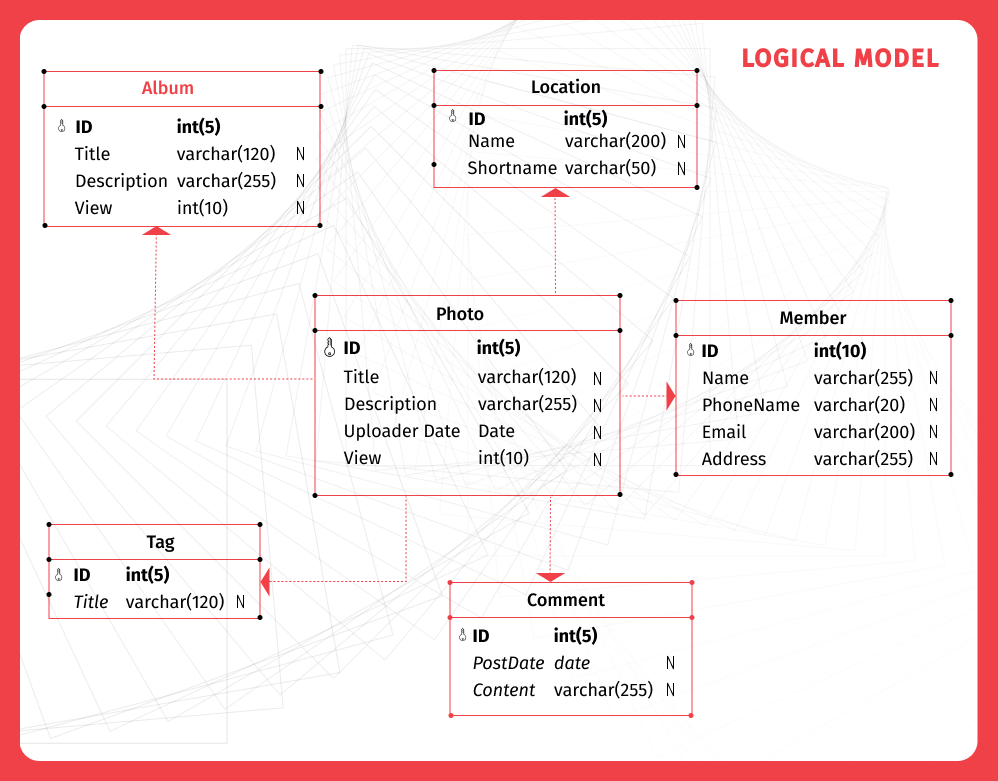
Software developers often start with the logical data model, skipping the conceptual level. However, if the database management system is already chosen, the most effective way can be to start with the physical model.
Physical data model
The physical data model is the most precise incarnation of the logical model. It presents a detailed database schema developed for a particular database management system considering all of its specifics. And thus it can be turned into an actual database.
The most evident difference between the logical and physical types of data models is that the physical model uses definite column names and names of all other database objects.
Professional database development tools usually provide the option of converting a physical data model (ER diagram) into executable SQL scripts. These scripts create a database with all objects and dependencies between them. This technique is called forward engineering.
The physical database model can be saved and reused for that specific database whenever needed. If the database requires changes, you can make the necessary amendments to the model on an ER diagram and apply them to the database using forward engineering.
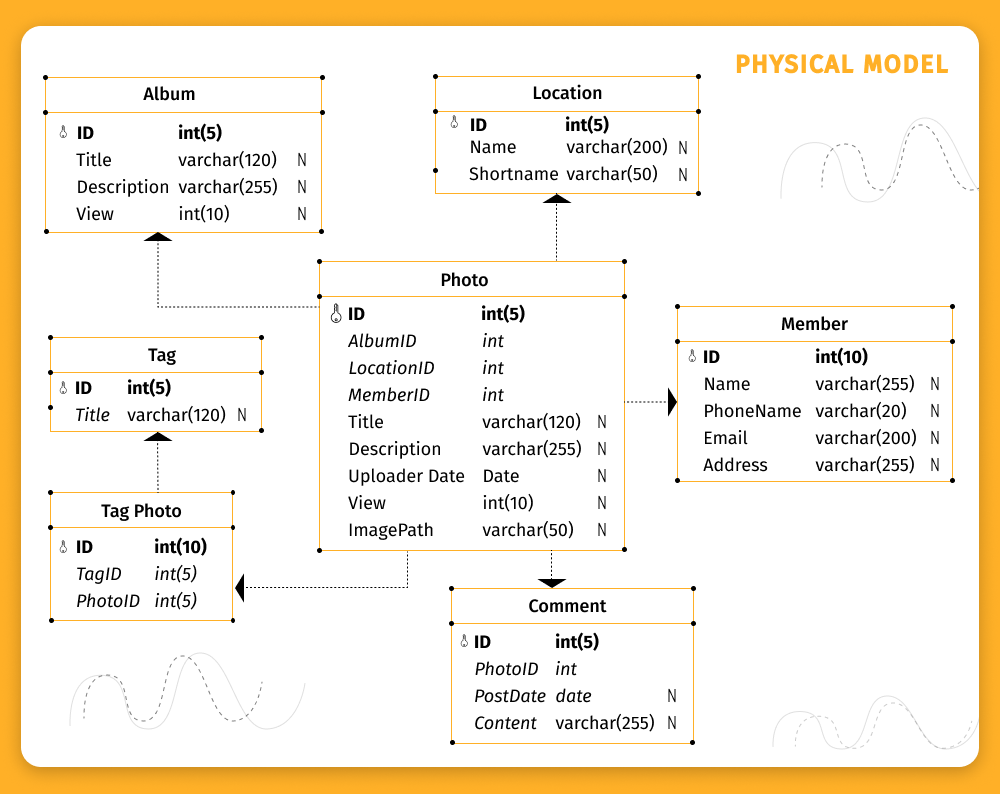
Conceptual and logical data models are business-oriented – they provide a universal “sketch” of the required database, with fewer (conceptual) or more (logical) details, independent of the specific DBMS. Logical models are often taken as references for many physical data models.
The physical data model matches the actual database and reflects the features of the required technology.
Database design is a fundamental task. Any error or failure at that stage causes dramatic consequences for that database and the entire software product. And the risk of making such mistakes grows drastically without appropriate data modeling. Considering how complex modern database structures are, and how many hundreds or thousands of objects they may include, you can see that manual modeling can be too sophisticated and risky.
The best way is to use professional tools that help model databases without much effort. And the best thing here is that you can effectively start with the physical data model, the most precise one you can get.
Leading software development companies, such as Devart with its dbForge Studio bestsellers, offer the functionality of creating detailed database diagrams.
Database diagrams in dbForge Studio for SQL Server
An extremely popular IDE for SQL Server devotees – dbForge Studio for SQL Server – offers all the functionality you might require when building, managing, and administering databases. It helps you easily create physical models of SQL Server databases, which can be turned into actual databases at once. The ER diagram modeling process is visual, making your work simpler, faster, and more accurate.
When it comes to modeling, dbForge Studio covers the following tasks:
- Create, edit, rename, and remove database objects
- Create, modify, or remove relationships
- Create containers for storing objects
- Navigate through tables, objects, and their relationships on diagrams
- Save and export ER diagrams
You can add tables, views, functions, and stored procedures using a simple and intuitive GUI. Triggers are added automatically.
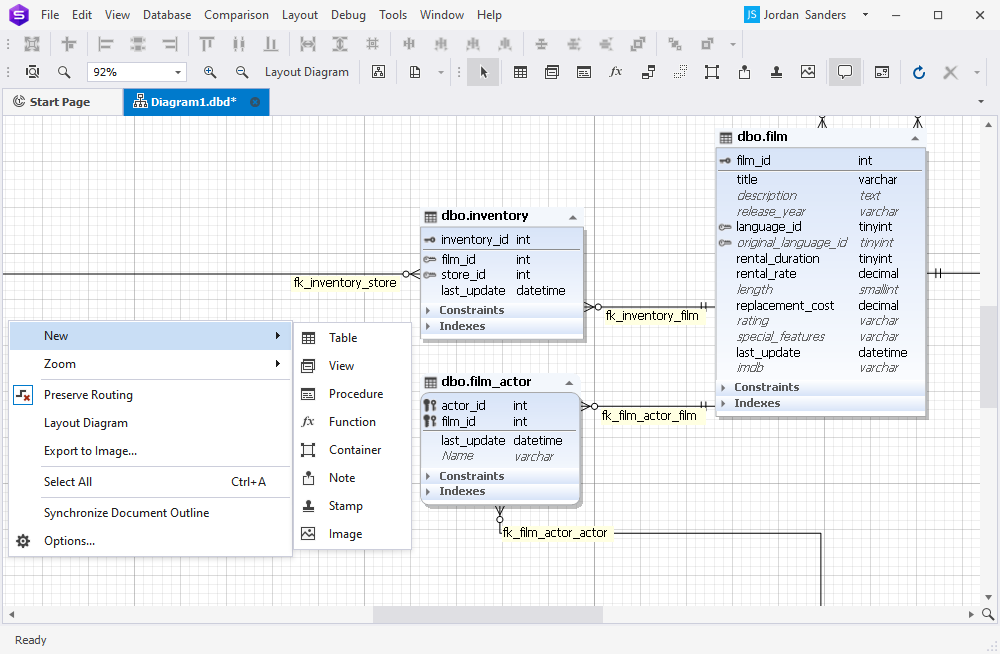
A handy object editor allows you to edit existing database objects visually. Related scripts are shown in the same window.
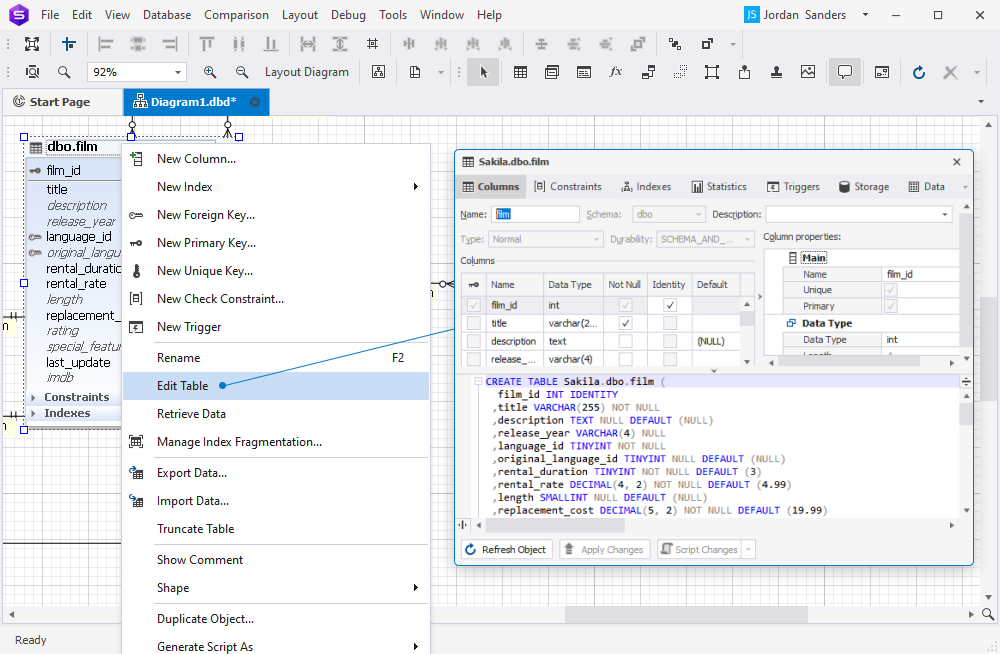
Also, you can set foreign key relationships between tables visually. On a diagram, these relationships are represented by connecting lines. The Studio lets you create new relationships, as well as reroute and delete the existing ones.
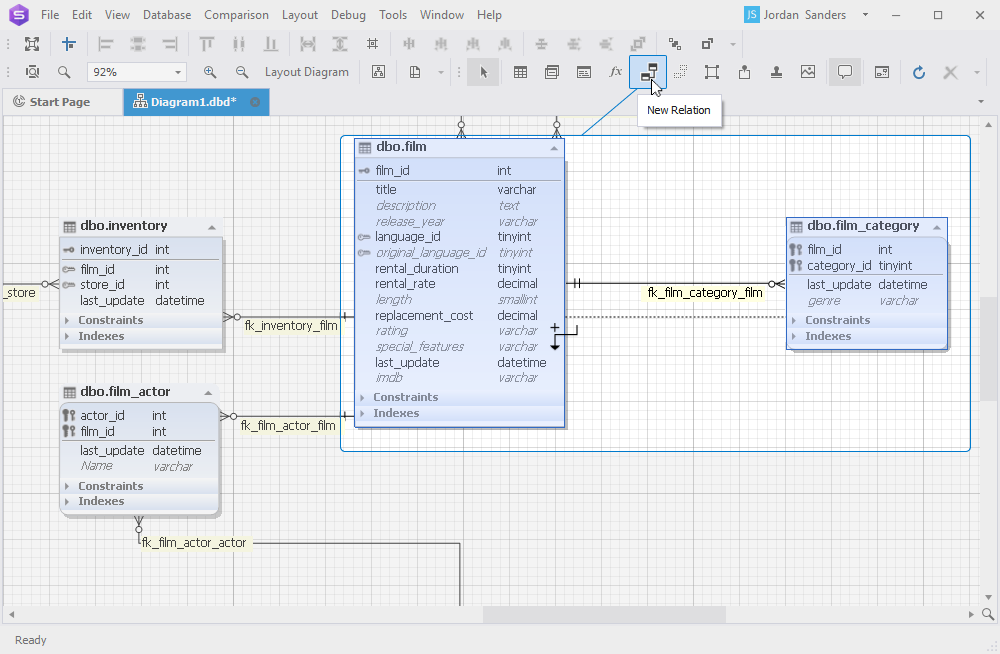
You can add comments to relations and add notes to your diagram if needed. Such notes and comments are always helpful, as they can clarify things of utmost importance to database users.
Besides, you can customize the look of your diagrams using several skins, both black-and-white and with rich color palettes. dbForge Studio allows saving diagrams and exporting them as BMP, JPG, PNG, TIF, and EMF files.
Conclusion
Appropriate database modeling is the key to the success of database development. When your database has to contain huge volumes of information, it must have an impeccable structure. Therefore, the job involves lots of thought, modeling, and changes. But the good news is that modeling can be fast and easy.
What you need here is to focus on your business requirements and equip yourself with a good toolset. Whether you deal with the conceptual, logical, or physical data model types (or all of them), professional tools let you work effectively, resolve your tasks faster, and make the entire process and its results much more predictable.
In practice, the most convenient way is to work with the physical data model, which essentially is an ER diagram that can be converted into a database schema. And if your DBMS is SQL Server, you can take note of dbForge Studio for SQL Server and give it a go – the 30-day free trial is at your service. Check it out and make your database modeling easier today!


